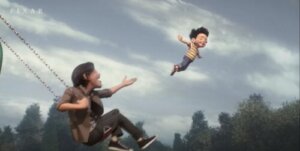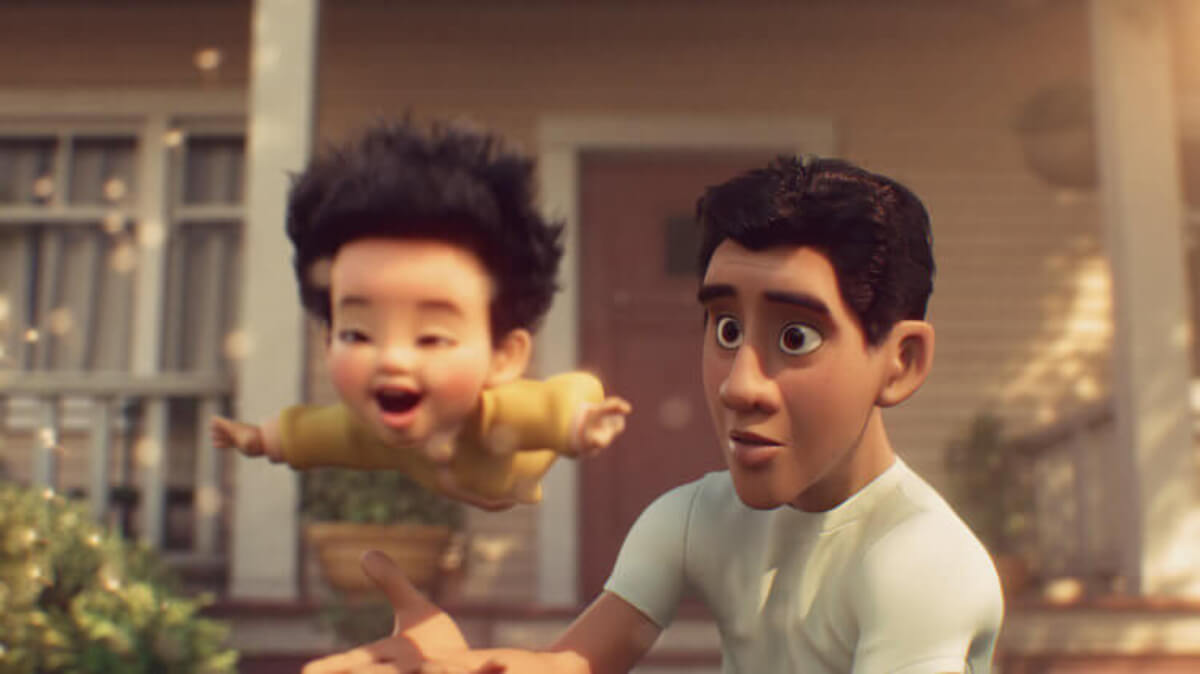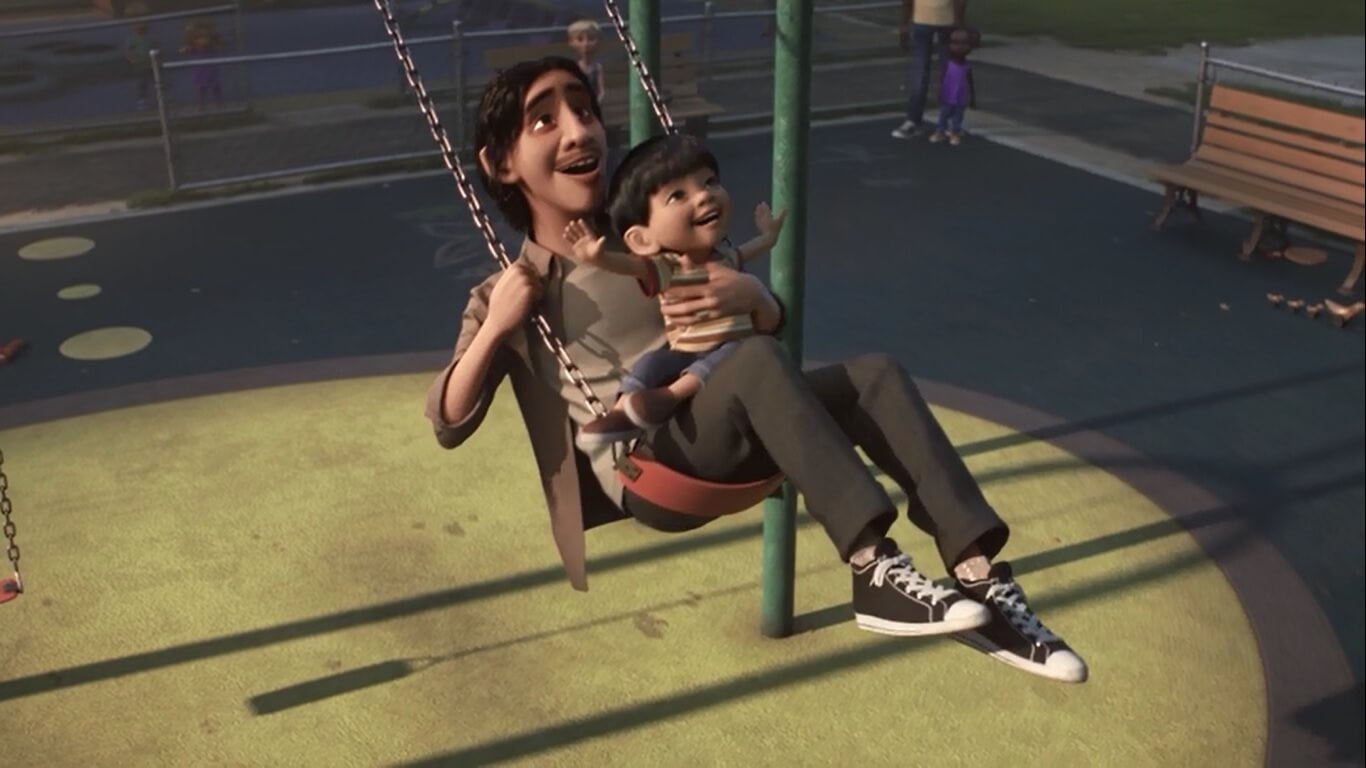Float, a Short Film about Autism that Will Move You


Written and verified by the psychologist Mara Amor López
Float is a short film about autism that shows how parents of children with different abilities must go through a difficult adaptation process.
The original idea is based on a true story, that of Bobby Rubio, author and director at Pixar®, who has a son with autism named Alex.
With this short film, Rubio wanted to transfer his experience to other parents, to help them while they experience this very particular process. And that’s why today, we’re going to share it with you so that you check it out for yourself!
Float, a short film about autism: What is it about?
Float is a short film that tells the story of a father and his son with autism. Despite being brief, its plot will move you to tears, especially if you have a child with a disability.
It’s focused on reflecting on the process of adaptation of families to the diagnosis of this condition. When receiving the news that a child has this condition, many parents don’t assimilate it very well. And to a large extent, this has to do with the social conception that “being different” is frowned upon.
But the reality is that we’re all different and diversity is our norm, not the exception. For this reason, the short film about autism aims to teach parents that we need to accept our children as they are and put aside appearances or the prejudices of others.
The only thing we should do in this life is love our children, without any limits, and let them be who they are.

Summary of Float
This film about autism begins with a father and son playing together in the yard of their house. When the father shows the child a dandelion, the little one blows on it and begins to fly along with the seeds. The father is surprised and hides him when he notices that the neighbors are looking at him in amazement.
Four years later, the boy is still floating and the cozy atmosphere has changed to a darker one. His father wants to hide him from the real world and try to show the rest something that he isn’t. To go out for a walk, for example, he puts weight on the child’s backpack. But even so, he manages to free himself and do what he really enjoys: Floating.
The two are then seen on the fence of a park, watching the other children play. The little protagonist escapes to approach them and does so by floating. Everyone is surprised and shows fear when they see his “gift”. After this, the father picks him up and takes him away.
In a fit of anguish, he looks at his son and asks “why can’t you be normal?”. The boy starts crying immediately and covers his head with his coat.
Realizing his mistake, the father hugs him, cradles him, and swings next to him to help him gain momentum. He understands that his son floats and encourages him to show the world that he can be who he is.
“In the beginning, the father loves his son, with all his heart, without restraint. Then, when he looks at society, that seeps in and pollutes the love, but the father has to decide if he agrees with them or tell them: I don’t care what they say, I’ll let my son be himself. When you accept your son for who he really is, you become a true father. Love returns to him and he’s happy again. So that’s what I’ll do. I’ll let my son be himself.”
-Bobby Alcid Rubio, director and writer of the short Float –
Autism
Autism is a disorder known as autism spectrum disorder (ASD). It’s a condition of brain development, which affects the way in which the person perceives the world and socializes (or communicates) with others.
This disorder is also characterized by repetitive and restricted behavior patterns and has different degrees of intensity. This varies depending on how impaired communication skills are, as well as the tenor of repetitive behaviors that a person engages in.
ASD usually begins in childhood and hinders social development in various areas. Although there’s no cure for this condition, we do have treatments to improve the functionality and quality of life of those who have it.

About Float, the short film about autism
If you haven’t seen this short film about autism, we recommend that you run to see it, because it will definitely leave a mark on your heart. It delicately shows the harsh reality of many children and families who receive the diagnosis of this condition every day.
We mustn’t miss its main teaching: That the love of a father or a mother is far above anything else. And as we can read at the end of the short, this message is especially dedicated “to all families with children considered different.”
Float is a short film about autism that shows how parents of children with different abilities must go through a difficult adaptation process.
The original idea is based on a true story, that of Bobby Rubio, author and director at Pixar®, who has a son with autism named Alex.
With this short film, Rubio wanted to transfer his experience to other parents, to help them while they experience this very particular process. And that’s why today, we’re going to share it with you so that you check it out for yourself!
Float, a short film about autism: What is it about?
Float is a short film that tells the story of a father and his son with autism. Despite being brief, its plot will move you to tears, especially if you have a child with a disability.
It’s focused on reflecting on the process of adaptation of families to the diagnosis of this condition. When receiving the news that a child has this condition, many parents don’t assimilate it very well. And to a large extent, this has to do with the social conception that “being different” is frowned upon.
But the reality is that we’re all different and diversity is our norm, not the exception. For this reason, the short film about autism aims to teach parents that we need to accept our children as they are and put aside appearances or the prejudices of others.
The only thing we should do in this life is love our children, without any limits, and let them be who they are.

Summary of Float
This film about autism begins with a father and son playing together in the yard of their house. When the father shows the child a dandelion, the little one blows on it and begins to fly along with the seeds. The father is surprised and hides him when he notices that the neighbors are looking at him in amazement.
Four years later, the boy is still floating and the cozy atmosphere has changed to a darker one. His father wants to hide him from the real world and try to show the rest something that he isn’t. To go out for a walk, for example, he puts weight on the child’s backpack. But even so, he manages to free himself and do what he really enjoys: Floating.
The two are then seen on the fence of a park, watching the other children play. The little protagonist escapes to approach them and does so by floating. Everyone is surprised and shows fear when they see his “gift”. After this, the father picks him up and takes him away.
In a fit of anguish, he looks at his son and asks “why can’t you be normal?”. The boy starts crying immediately and covers his head with his coat.
Realizing his mistake, the father hugs him, cradles him, and swings next to him to help him gain momentum. He understands that his son floats and encourages him to show the world that he can be who he is.
“In the beginning, the father loves his son, with all his heart, without restraint. Then, when he looks at society, that seeps in and pollutes the love, but the father has to decide if he agrees with them or tell them: I don’t care what they say, I’ll let my son be himself. When you accept your son for who he really is, you become a true father. Love returns to him and he’s happy again. So that’s what I’ll do. I’ll let my son be himself.”
-Bobby Alcid Rubio, director and writer of the short Float –
Autism
Autism is a disorder known as autism spectrum disorder (ASD). It’s a condition of brain development, which affects the way in which the person perceives the world and socializes (or communicates) with others.
This disorder is also characterized by repetitive and restricted behavior patterns and has different degrees of intensity. This varies depending on how impaired communication skills are, as well as the tenor of repetitive behaviors that a person engages in.
ASD usually begins in childhood and hinders social development in various areas. Although there’s no cure for this condition, we do have treatments to improve the functionality and quality of life of those who have it.

About Float, the short film about autism
If you haven’t seen this short film about autism, we recommend that you run to see it, because it will definitely leave a mark on your heart. It delicately shows the harsh reality of many children and families who receive the diagnosis of this condition every day.
We mustn’t miss its main teaching: That the love of a father or a mother is far above anything else. And as we can read at the end of the short, this message is especially dedicated “to all families with children considered different.”
All cited sources were thoroughly reviewed by our team to ensure their quality, reliability, currency, and validity. The bibliography of this article was considered reliable and of academic or scientific accuracy.
- Wing, L. (1998). Autismo En Ninos y Adultos. Barcelona: Paidós.
- Ferrari, P. (2000). El autismo infantil.
- Mulas, F., Ros-Cervera, G., Millá, M. G., Etchepareborda, M. C., Abad, L., & Téllez de Meneses, M. (2010). Modelos de intervención en niños con autismo. Rev Neurol, 50(3), 77-84.
- Cabrera, D. (2007). Generalidades sobre el autismo. Revista colombiana de psiquiatría, 36(1), 208-220.
This text is provided for informational purposes only and does not replace consultation with a professional. If in doubt, consult your specialist.








